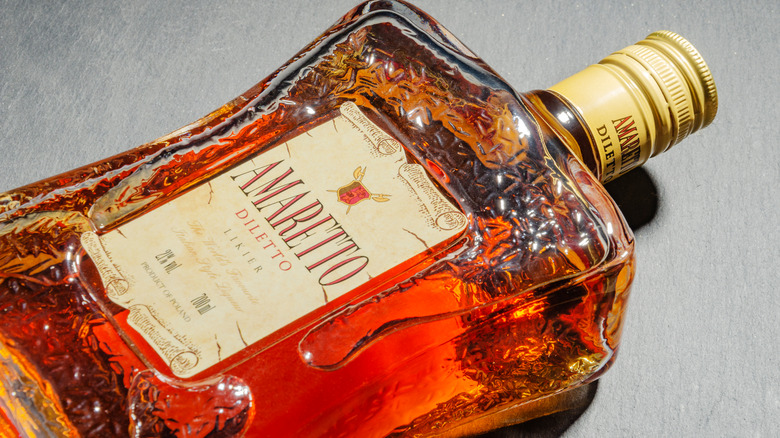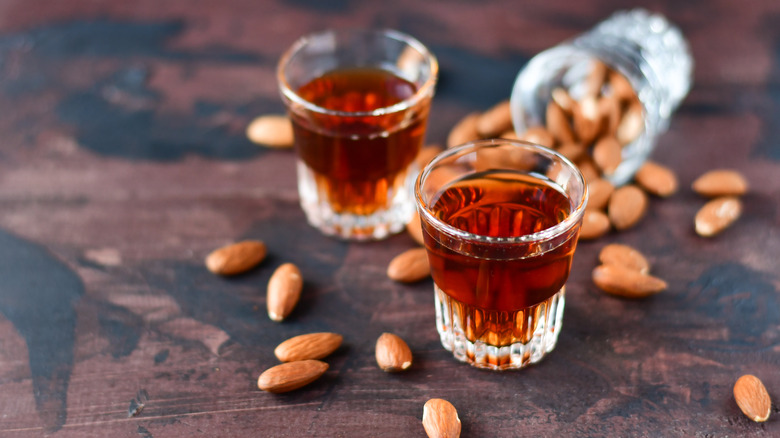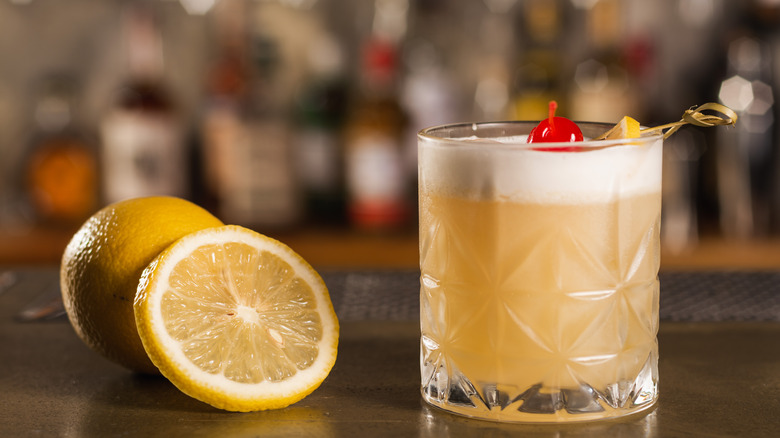The Ingredient That Gives Amaretto Its Distinct Almond Flavor
Amaretto is an Italian liqueur with a bittersweet almond-like flavor. In addition to being enjoyed in cocktails like the amaretto sour, you may have tasted amaretto in cookies from an Italian bakery. While it's become very popular worldwide, there are still some common misconceptions about this famous liqueur.
Amaretto is often described as almond-flavored, but the most famous brand of amaretto, Disaronno, doesn't even use almonds to create its signature taste. Instead, it uses apricot kernel oil, which mimics the flavor of almonds, in addition to caramelized sugar and more than a dozen herbs and spices. The kernels found in the pits of apricots do taste similar to almonds, and apricots and almonds are also in the same scientific genus. While some amaretto brands do use real steeped almonds in their formula, the use of apricot kernels is more popular. If this sounds a bit odd, know that Disaronno is the oldest brand of amaretto in Italy, so its recipe is the standard formula for amaretto, not a variation.
This liqueur also uses some other unusual ingredient in its recipe, depending on the brand. The fascinating history behind amaretto shows how it developed such a complex formula, as well as its own spin-off liqueurs that are equally intriguing.
The history of amaretto
Not many liqueurs that we enjoy today have a history that dates to the Renaissance period. Disaronno amaretto — again, the oldest brand ever sold in Italy — has an origin story circa 1525 that involves famed painter Bernardo Luini. Luini once asked a widowed innkeeper to model for a fresco of the Virgin Mary. In return, she made him a special almond-flavored liqueur. The question is: Did she use real almonds?
The innkeeper's recipe is reputedly still used by the Reina family behind the Disaronno company, and indeed, it excludes almonds in favor of apricot kernel oil. The next-oldest amaretto brand to hit the market, Lazzaroni, didn't produce any amaretto until the late 18th century, and it was only sold when baked into cookies at that time. The liquid alcohol version of Lazzaroni followed in 1851, and it also uses apricot kernels. However, an even more interesting ingredient in Lazzaroni's liqueur are the cookies that preceded it. The biscuits are crushed, soaked in alcoholic solution to make a concentrate, strained, then mixed with other ingredients to make the liqueur.
Today, amaretto is enjoyed in cocktails, coffee with whipped cream, and more. Amaretto means "little bitter" in Italian, and it's certainly less bitter than Italian amaros like Aperol and Campari, though all share a modest alcohol-by-volume (ABV) content. Amaretto's ABV ranges from 21 to 28%, depending on the brand, which is comparable to Campari (28%), but significantly stronger than Aperol (only 11%).
The French version of amaretto uses apricot kernels, too
For another liqueur that uses apricot kernels, there's Crème de Noyaux, which is often described as the French version of amaretto. This product originated in the 19th century and has the same almond-like flavor as amaretto. However, in addition to apricots, Crème de Noyaux may also be flavored with kernels from other stone fruits like apricots, cherries, peaches, and plums.
Consuming the kernels from the pits of these fruits is considered risky by many, as in their raw state, the pits contain amygdalin, a toxic substance that can potentially lead to cyanide poisoning. However, there's no danger in drinking amaretto or Crème de Noyaux, since distillers exercise abundant caution in removing this toxic element during the production process. You can enjoy mixing amaretto into drinks with peace of mind.
Disaronno's amaretto was introduced to America in 1968 and was an immediate hit, inspiring two cocktails that are still popular today. The first, The Godfather, pairs Amaretto with Scotch whisky. Meanwhile, the amaretto sour is a simple concoction of lemon juice, sugar, and amaretto. It can be garnished with an orange slice and maraschino cherry for a fun look and extra hint of tangy and fruity flavor.



